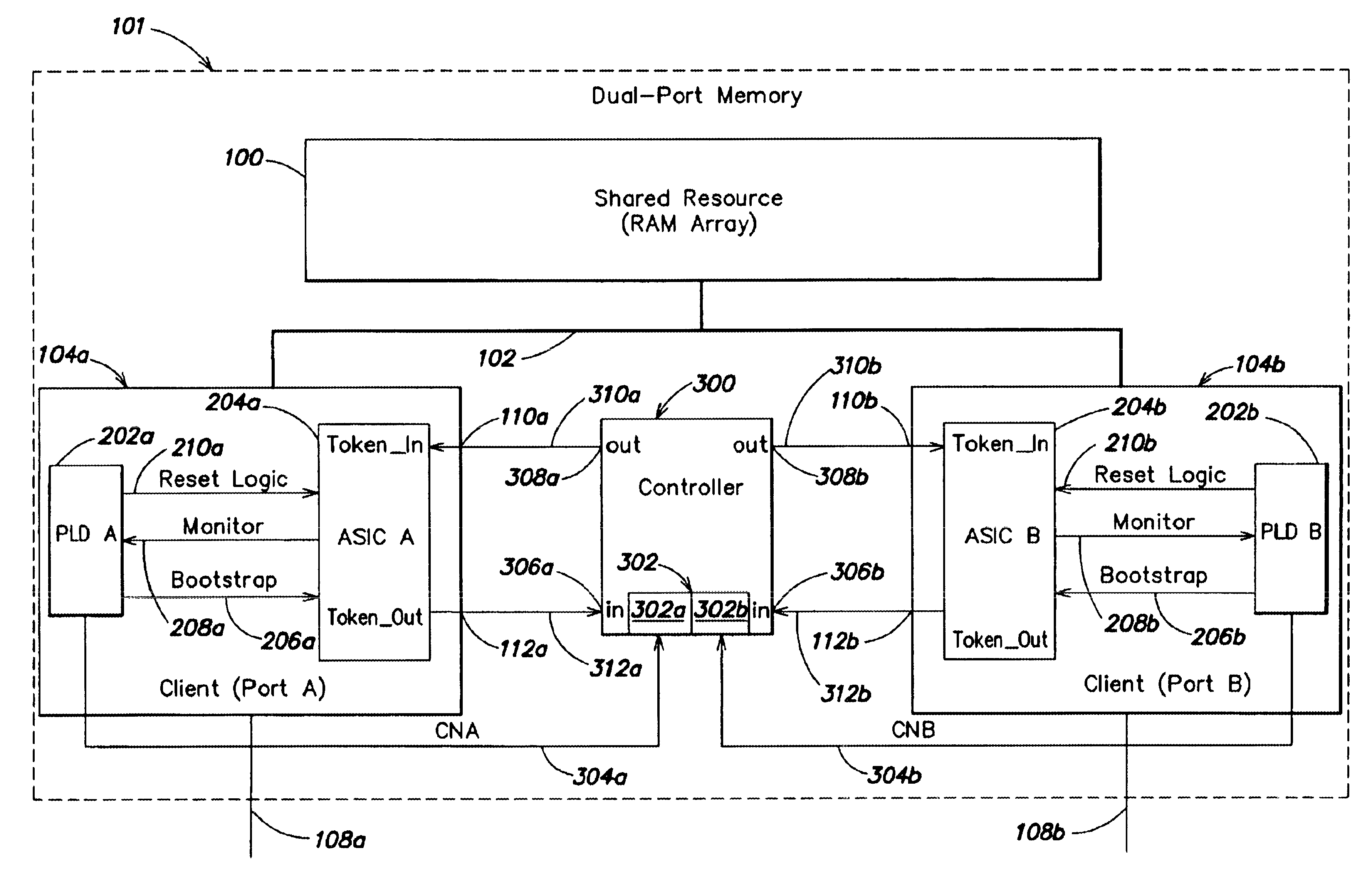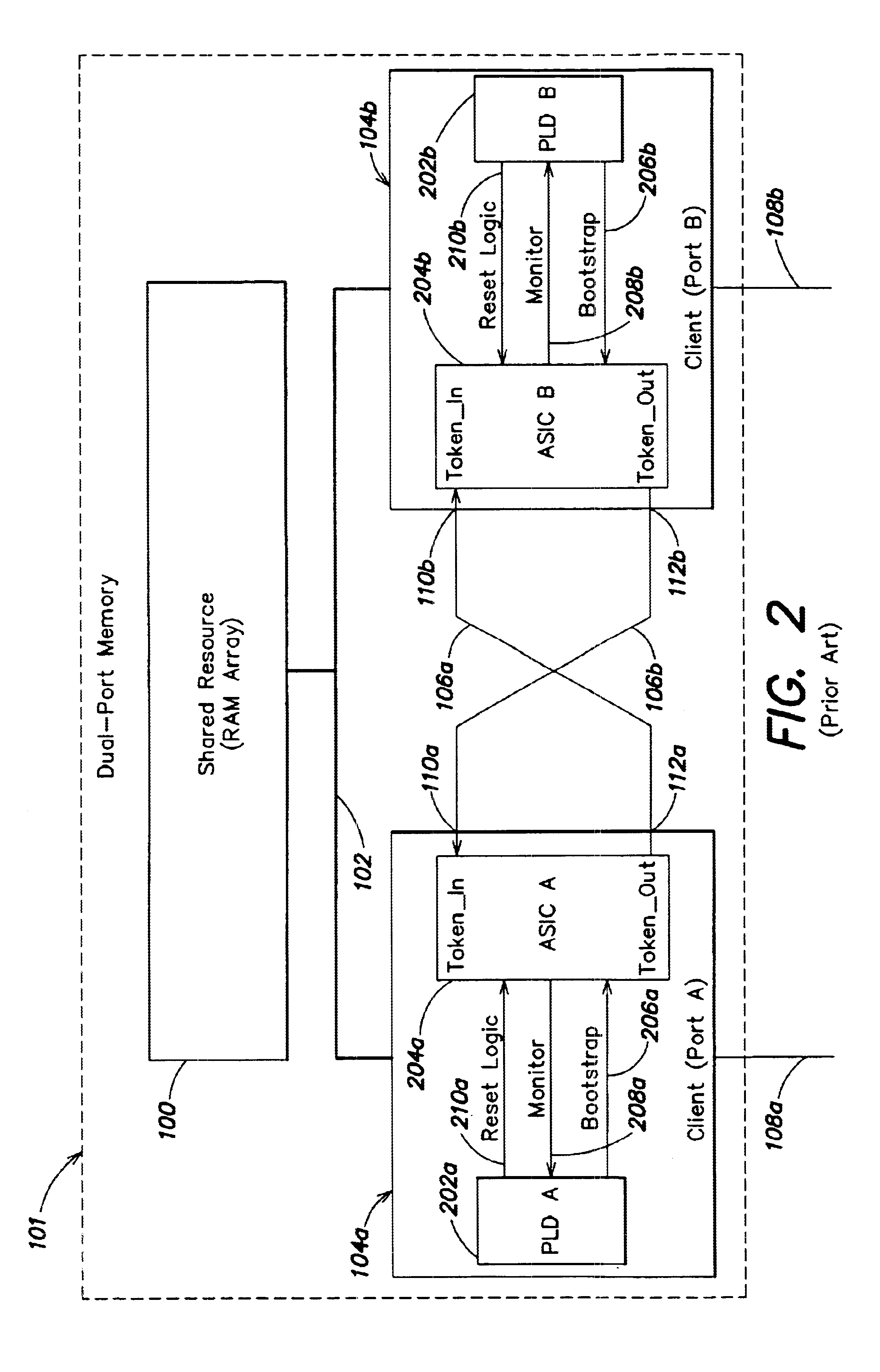Token exchange system with fault protection
a token exchange and fault protection technology, applied in the field of electronic systems, can solve problems such as inability of both clients to pass tokens, data transmission errors and/or damage to circuitry connected, and affect the functionality of token-passing schemes
- Summary
- Abstract
- Description
- Claims
- Application Information
AI Technical Summary
Benefits of technology
Problems solved by technology
Method used
Image
Examples
Embodiment Construction
[0040]According to one embodiment of the present invention, a controller may be used with a system including two or more clients that access a shared resource to control the exchanging of a token among the clients. The controller may be configured such that, in response to a trigger condition, the controller may cause the token to be passed to fewer than all of the clients in the system. For example, if a problem is detected with a client (e.g., due to a failure of a PLD 202 as described above in connection with FIG. 2), that client can be removed from the token ring. The controller may be used in conjunction with two or more clients of any type that employ a token-passing scheme to access a shared resource. In systems including a large number of clients, a single controller or multiple controllers may be employed. In the example discussed below, the shared resource is a memory array and the clients are ports. However, the invention is not limited to use with any particular type of ...
PUM
 Login to View More
Login to View More Abstract
Description
Claims
Application Information
 Login to View More
Login to View More - R&D
- Intellectual Property
- Life Sciences
- Materials
- Tech Scout
- Unparalleled Data Quality
- Higher Quality Content
- 60% Fewer Hallucinations
Browse by: Latest US Patents, China's latest patents, Technical Efficacy Thesaurus, Application Domain, Technology Topic, Popular Technical Reports.
© 2025 PatSnap. All rights reserved.Legal|Privacy policy|Modern Slavery Act Transparency Statement|Sitemap|About US| Contact US: help@patsnap.com



